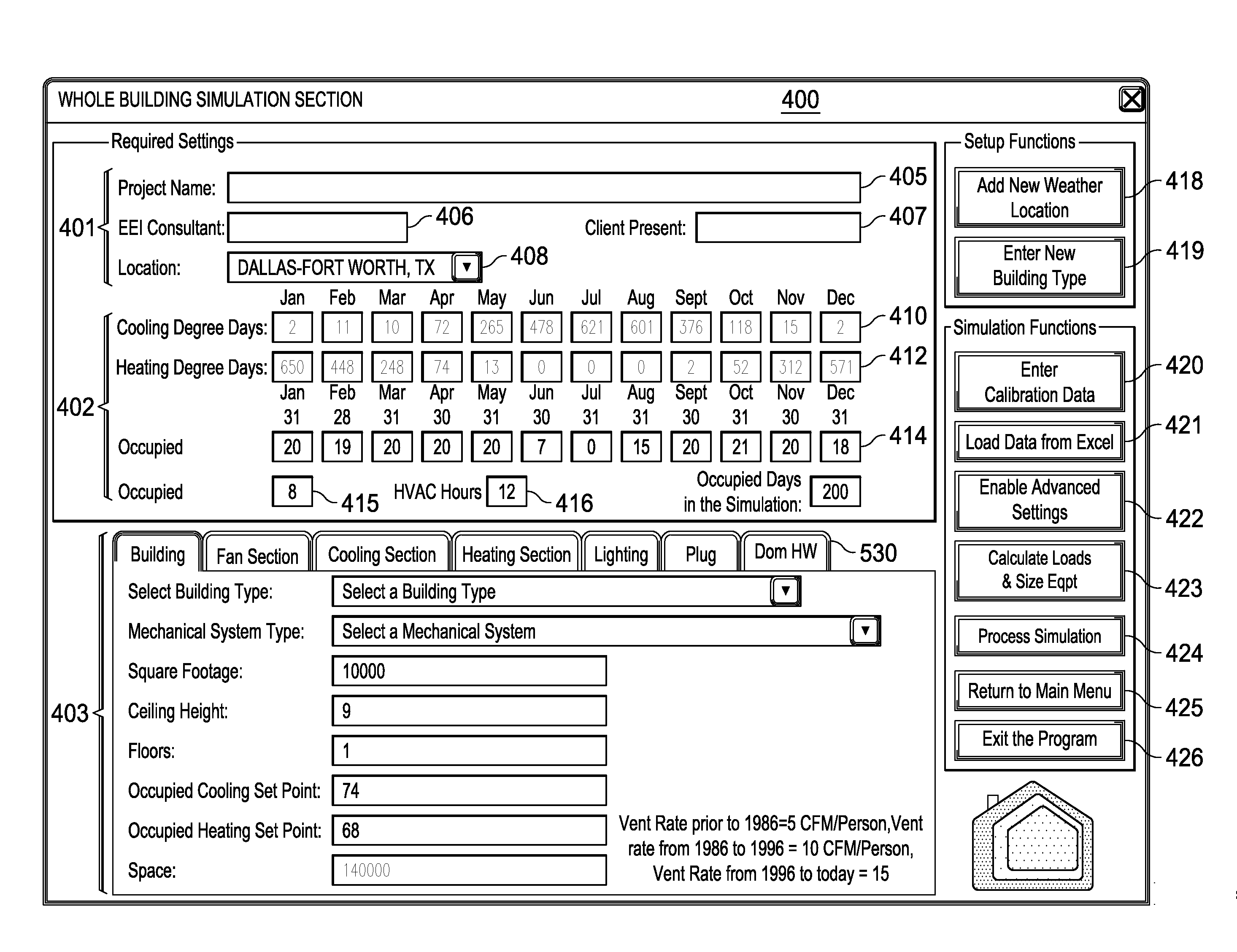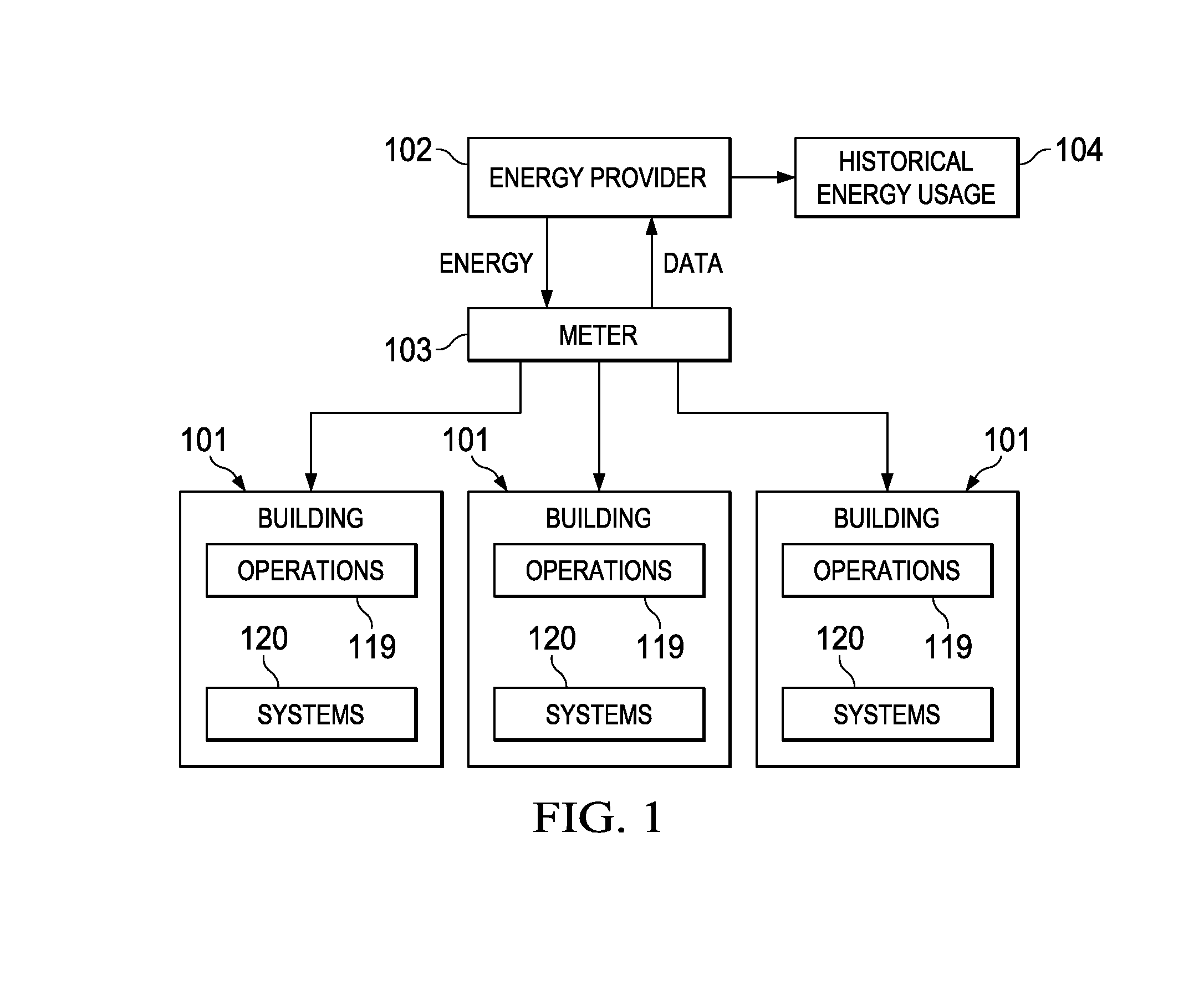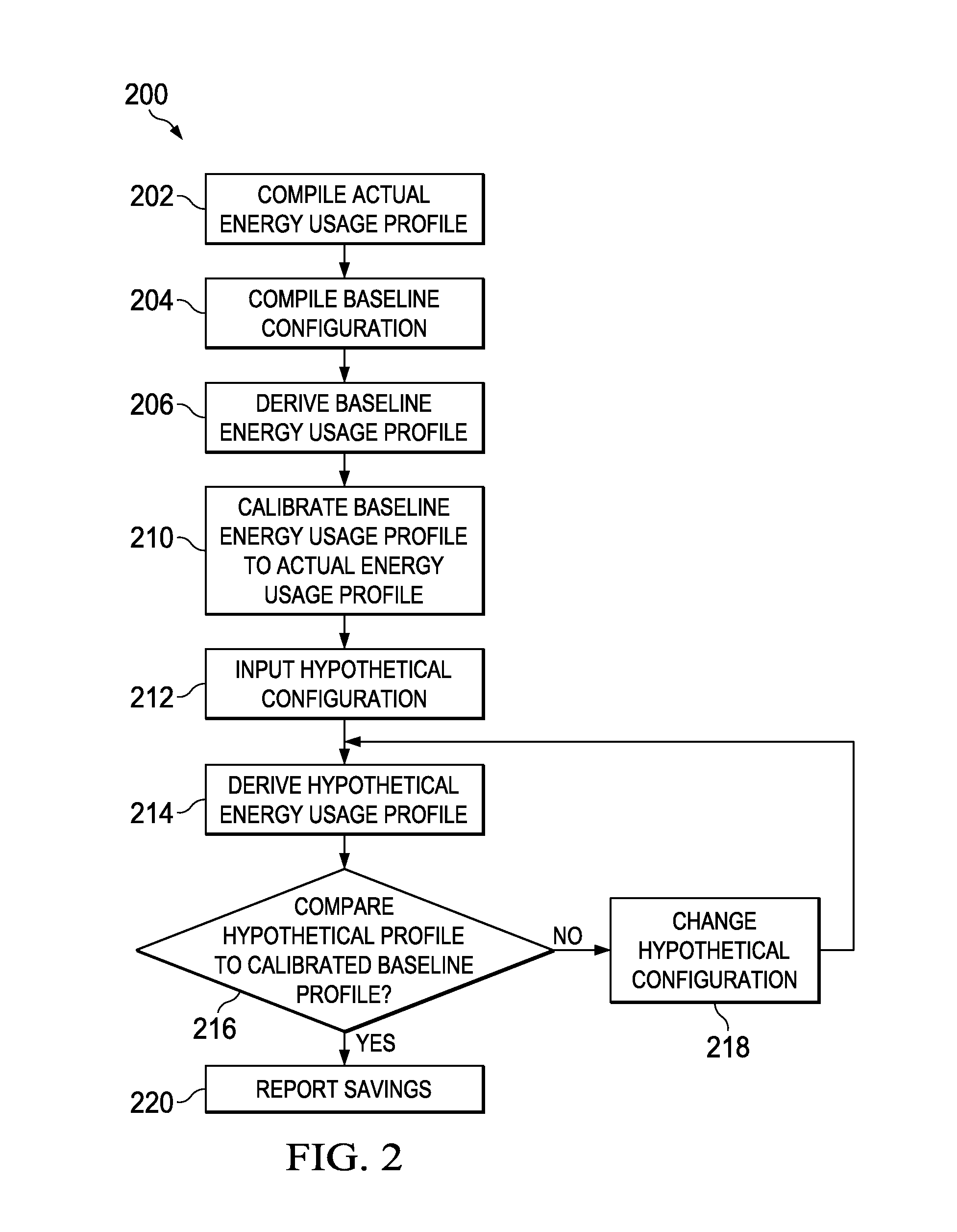Adjustment simulation method for energy consumption
- Summary
- Abstract
- Description
- Claims
- Application Information
AI Technical Summary
Benefits of technology
Problems solved by technology
Method used
Image
Examples
Embodiment Construction
[0037]The system and methods described are implemented using digital computer systems. In one aspect of the present disclosure, the systems and methods are implemented on a digital computer having a processor for executing the methods embodied within a set of program instructions. The program instructions are stored in an electronic memory and in digital storage media connected to the digital computer. The digital computer includes a user interface system including a display device and a keying device. The digital storage media can include a compact disc, a hard drive, a flash drive or any other form of portable or non-portable persistent storage suitable for electronically storing program instructions.
[0038]In a preferred embodiment, the set of program instructions are implemented within a spreadsheet program on the digital computer, for example, a set of macros and Visual Basic code in a Microsoft ExcelTM spreadsheet. However, implementation of the methods of the present disclosur...
PUM
 Login to View More
Login to View More Abstract
Description
Claims
Application Information
 Login to View More
Login to View More - R&D
- Intellectual Property
- Life Sciences
- Materials
- Tech Scout
- Unparalleled Data Quality
- Higher Quality Content
- 60% Fewer Hallucinations
Browse by: Latest US Patents, China's latest patents, Technical Efficacy Thesaurus, Application Domain, Technology Topic, Popular Technical Reports.
© 2025 PatSnap. All rights reserved.Legal|Privacy policy|Modern Slavery Act Transparency Statement|Sitemap|About US| Contact US: help@patsnap.com



